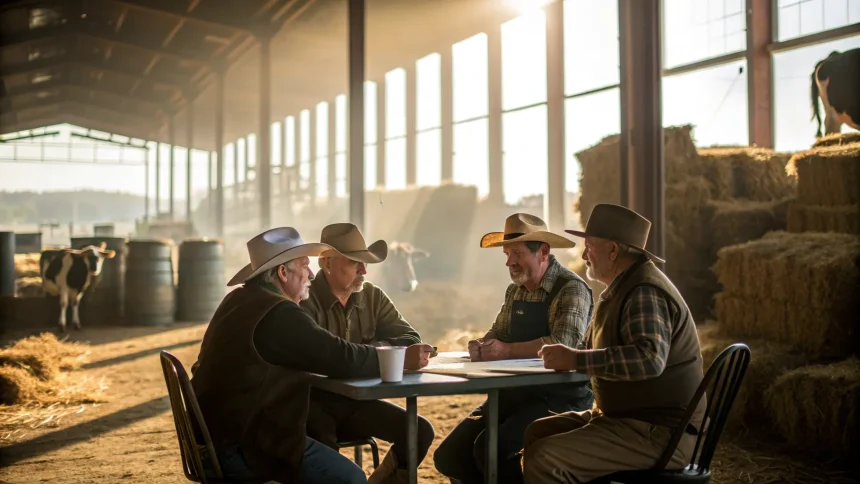Ranchers are pushing back against Donald Trump’s latest ideas for lowering food prices, warning that quick fixes won’t solve what they call deep market issues. Their warning comes as consumers continue to face high grocery bills across much of the country and producers say they are squeezed by rising costs and a concentrated meatpacking sector.
Producers say the proposals risk treating only the visible stress of high prices rather than the structural pressures driving them. They want long-term reforms that address processing capacity, competition, and ranch-level margins.
“Symptoms not the problems.”
Why ranchers are frustrated
Many ranchers argue that price relief at the checkout line will be short-lived without changes in how cattle are priced and how beef moves from pasture to store shelves. They say the market has tilted against independent producers for years, leaving them with thin margins even when retail prices rise.
Feed, fuel, and labor costs have climbed, and drought in key regions has tightened herds. At the same time, a small number of large meatpackers handle much of the nation’s beef. Producers argue that this concentration compresses prices paid to ranchers while retail beef prices remain high after shocks such as the pandemic and plant disruptions.
The proposals and the pushback
While specifics have been light, the general ideas center on lowering consumer prices quickly, such as by pressuring grocers or adjusting trade levers. Ranchers say those approaches ignore chokepoints upstream.
- They want more transparent cattle pricing and more competition in cash markets.
- They support investments in regional processing to reduce bottlenecks.
- They seek policies that improve resilience during supply shocks.
“If the plan is to force lower prices at retail without fixing packer power and capacity, it hurts the people who actually raise cattle,” one rancher said in a discussion summarized by producer groups. “We need the market to work at every step, not just the last one.”
What’s driving high beef prices
High prices at the meat counter reflect several factors. Herd sizes tightened after years of drought and high input costs. Processing plants faced labor shortages and disruptions. Transportation and energy costs picked up, raising expenses throughout the chain.
Economists say that when a few firms handle a large share of processing, disruptions hit harder and recovery takes longer. That can keep prices elevated for consumers while producers struggle to negotiate better terms. Ranchers argue that stronger pricing transparency would help restore balance.
Consumers want relief, but at what cost?
Voters want immediate relief from high grocery bills. Price-focused pledges can be popular in a tight economy. But analysts warn that pressuring one part of the chain can have unintended effects, such as discouraging supply or pushing smaller producers out if margins shrink further.
Some see room for targeted steps that could help both sides, such as easing permitting for new regional plants, supporting workforce training at existing facilities, and bolstering market reporting so ranchers and buyers can negotiate on clearer terms.
Industry response and the road ahead
Meatpackers often argue that they operate efficiently and pass along cost savings when possible. Retailers say they face their own rising costs, from transportation to refrigeration. Both point to supply volatility and labor shortages as key hurdles.
Producers counter that efficiency claims ring hollow when ranch-level prices lag far behind retail. They want policymakers to tackle competition questions and invest in capacity that diversifies where cattle can be processed and sold.
What solutions could help
Policy options discussed by rancher groups and analysts include:
- Strengthening cattle pricing transparency and reporting.
- Encouraging more negotiated cash trades to improve price discovery.
- Investing in regional and mid-sized processing to reduce bottlenecks.
- Improving drought resilience and feed supply to stabilize herds.
- Supporting workforce pipelines for meat processing jobs.
The debate is likely to intensify as campaign season advances and grocery prices remain a top concern. Ranchers say they are ready to work with any administration that targets the root causes rather than the symptoms.
For now, the gap between retail prices and ranch-level returns has many producers skeptical of quick promises. Their message is blunt and consistent: fix competition, capacity, and transparency, and price relief will follow. Without that, they warn, consumers may see only temporary dips while the system remains fragile.







